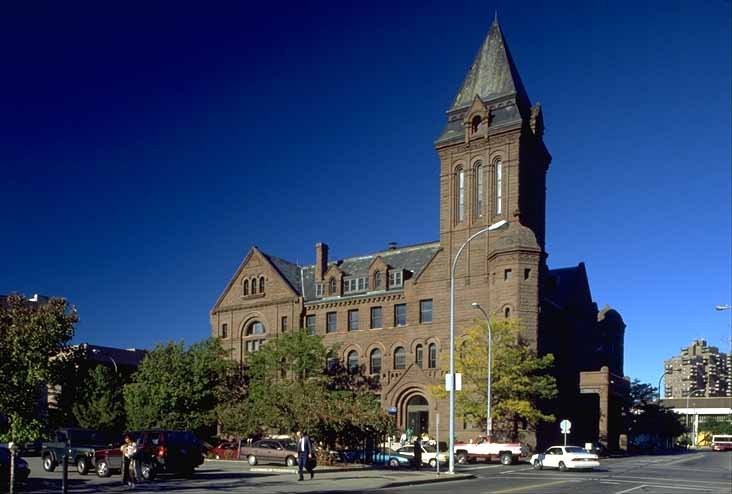Fitzhugh Hall; Rochester City Hall
Introduction
Text-to-speech Audio
Images
Today's Rochester City Hall served as the main post office until the 1930s. http://www.cityofrochester.gov/rochestercityhall/

Backstory and Context
Text-to-speech Audio
Built in the late 1880s, the brownstone building at the intersection of Fitzhugh Street and Church Street has gone by several names. By 1898, the building was colloquially known as "Fitzhugh Hall." Until the 1930s, the building served as the Rochester Main Post Office. Today, the building is known as Rochester City Hall. It was listed on the National Register of Historic Places in 1972.
On September 14, 1898, despite public unveiling ceremonies of the Douglass Monument not going as planned, nearly three thousand people gathered at Fitzhugh Hall to honor the memory of Frederick Douglass. Services continued due to the presence of all of Douglass's surviving family members -- his widow, three children, and three grandchildren -- who had traveled to Rochester from Washington, D.C., to be present for the unveiling. Addresses were delivered by prominent local and national orators, including Susan B. Anthony. In her address, Anthony remembered Douglass as a friend and family man and provided anecdotal evidence of his ability to overcome prejudice. Ida B. Wells-Barnett, female orator and lifetime advocate of anti-lynching laws, spoke of Douglass's continuing legacy, stating that Douglass "will be an inspiration to us in the many problems which [still] confront us."
The speeches were followed by a violin solo, played by Joseph Douglass, the orator's grandson. A reception and Ball, held later that evening, was thought to be “a fitting finale for an eventful day in the history of Rochester.”
Sources
Thompson, J. W.. An Authentic History of the Douglass Monument. . . http://www.libraryweb.org/~digitized/books/History_Douglass_Monument.pdf. This is a PDF of a book in the library.
